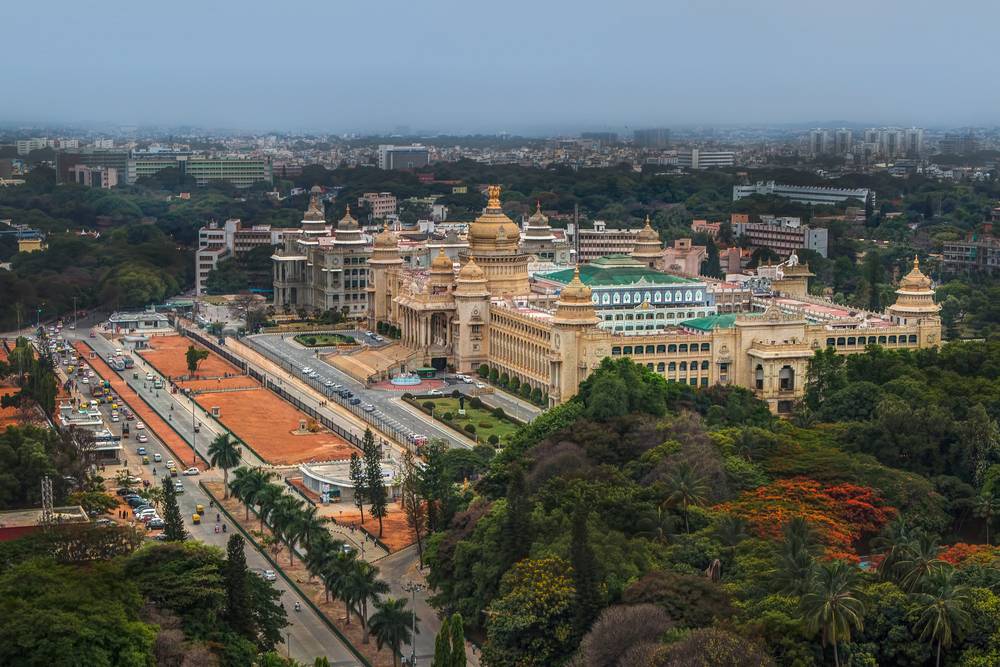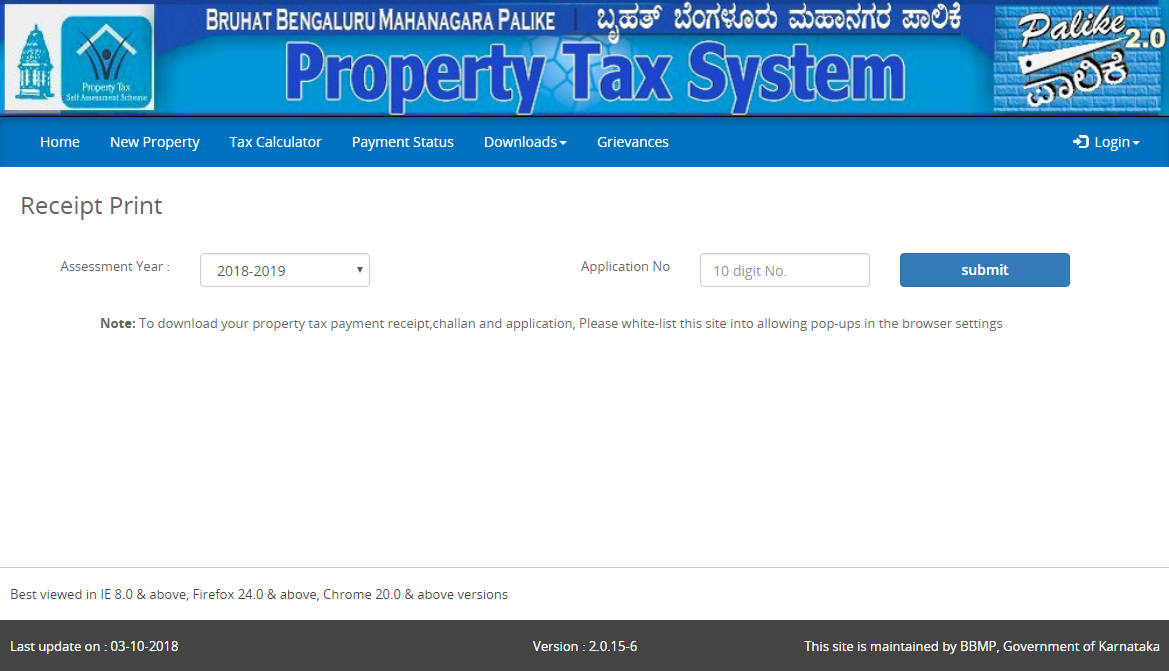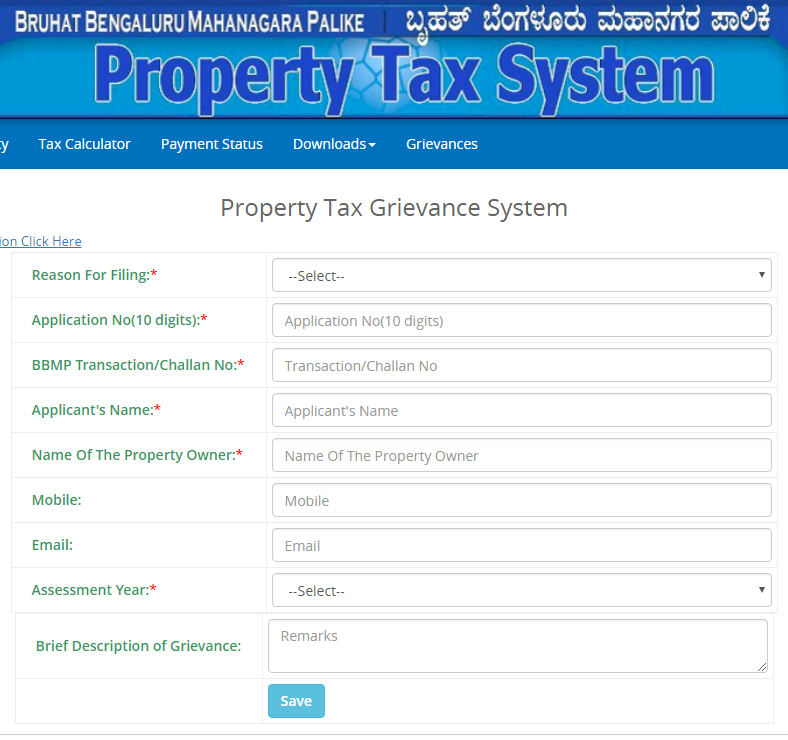 Updated on: December 17th, 2019 5:45 PM
Updated on: December 17th, 2019 5:45 PM
Bengaluru Property Tax
Property taxes are considered to be one of the most vital sources of revenue for the Government. The property tax collected by corporation and municipalities across the country is used to render various amenities to the residents. Property tax is imposed by the State Government on the owners of a property on a year-on-year basis. In this article, we look at the various aspects of Bengaluru property tax in detail.Uses of Property Tax
The Government utilizes the funds collected from its citizens in a way that benefits them. The revenue received by the State Government is distributed to various municipalities within its boundaries to develop civic amenities like roads, drainage, public parks, sanitation, light posts, etc.Taxable Properties
Properties that are liable to property tax in Bengaluru are independent buildings, which includes residential and commercial; flats and apartments; shops; godowns; vacant lands; etc. Residents of Bengaluru who are liable to pay property tax must remit the same to the Bruhat Bangalore Mahanagara Palike (BBMP).Overview of BBMO
Bruhat Bengaluru Mahanagara Palike (BBMP) is designated as the Municipality of the City of Bengaluru, and the property owners are obligated to remit these taxes to the body. The BBMP uses a unique calculating method called Unit Area Value (UAV), which is calculated based on the expected returns from the property. It is subject to variations due to the location and nature of usage of the property. Estimation of property tax is determined by multiplying the area of the property by the sq ft tax rate per month (UNIT) that is fixed on the basis of the location of the property (AREA) and multiplied by current property tax rate (VALUE). Under the supervision value published by the Department of Stamps and Registration, BBMP is administered into six value zones. However, there is no fixed property tax rate, since the tax rate might differ based on the zone of a particular property.Payment of BBMP Property Tax
The period of property tax payment starts from April of a particular year and concludes on the March of the succeeding year. Therefore, the tax has to be remitted within 30 April of the following Financial Year. BBMP grants 5% refund for taxpayers paying the tax in a single instalment. A delay in payment of property tax may incur charges of 2% per month or 24% per annum. That said, a property tax can also be paid in two instalments, neither incurring interest charges nor refund.Methods of Payment
Property tax can be remitted by any of the following methods: Manual Process In the traditional manual method, The taxpayer has to fill up the application forms and then submit it along with a cheque or a demand draft. Online Process The online process is the easiest and convenient way to make a payment. In this case, the taxpayer has to fill the forms online and remit the cash through bank transfers, credit cards or debit cards. Some banks have been authorized to collect Property tax, and they are listed below.- Canara Bank
- Corporation Bank
- HDFC Bank
- IDBI Bank
- Induslnd Bank
- Indian Overseas Bank
- Kotak Mahindra Bank
- Yes Bank
- ING Vysya Bank
Forms of Necessity
A total of six forms are required while paying property taxes in Bengaluru. They are Forms I, II, III, IV, V and VI. Let's understand them in detail:Form I
This form to used when the property owner possesses the Property Identification Number(PID) of the properties. It's an ID that is given to every property, containing the information about the ward, street and plot on which the property stands.Form II
This form is used when the property owner does not possess a PID but owns a Katha number. It's a number given in the Khatha certificate that is given for each property containing the details that are relevant to the property.Form III
This form is used when the property owner does not possess both PID and Khatha number.Form IV
Form IV is a white form that is used when there have been no changes in the property details. The form contains details pertaining to the increase or decrease in the size of the property or a change in its statues.Form V
This is a blue form that is used when there is a change made in the property. In addition to this, the form can be used when a property changes its status from under construction to constructed.Form VI
This form is used when the under assessed property is spared from paying property tax. Therefore, if a property is exempted from paying a property tax, it is liable to pay a service charge. This payment can be made using the form.Tax Evaluation
Given below are the steps to calculate property tax for properties in Bengaluru. Step 1: Note down the area on which the property has been constructed, the value per unit area and the refund that is applicable. Step 2: The taxpayer has to multiply the unit area value with the constructed area and then multiply it with 10 (for 10 months). Step 3: If a refund is applicable, it should be deducted from the total value obtained from Step 2, and that total annual value of the property should be noted down. Step 4: 20% of the total annual value must be taken to determine the property tax. Step 5: 24% of the property tax must be taken to determine the applicable cess. Step 6: Add the property tax to the cess to derive the actual outstanding tax. Step 7: A reduction of 5% has to made to obtain the final payable tax. Step 8: If the taxpayer remits the sum before the due date, then a refund 5% is applicable.Payment Procedure
Here are the steps to make online payment of Property Tax. Step 1: Log on to the website The taxpayer has to log on to the official website. State Portal
Step 2: Click on Fetch option
The taxpayer has to enter the SAS Base Application Number and then click on the 'Fetch' option.
If the user is not certain of the application number, he/she must click on the 'Renewal Application Number' and enter the previous year's application number for SAS. As an alternative, it can be done by entering the PID number.
Step 3: Click on Confirm
If the PID or the SAS number is valid, then the property owner's name will be displayed on the screen. After verifying it, the applicant has to click on the 'Confirm' option.
Step 4: Property Details
The user is directed to a new page where all the details of the property will be displayed.
Step 5: Click on Proceed
If the user has to make corrections in the area; status of the tenancy or the property's occupancy, he/she has to mark the checkbox and then click on the 'Proceed' option.
Step 6: Form V is Displayed
By clicking the proceed option, Form V of the property tax appears on the screen. All the corrections of the property must be made in this application form . The taxpayer must click on 'Proceed to Next Step.' Through this, the he/she can view the tax that has been calculated based on the given specifications.
Step 7: Filled-in Information
The next page contains the fields that includes the auto-filled in information. If the taxpayer leaves the page unchecked, the information will then be non-editable, enabling him/her to merely change the mobile number later on.
Step 8: Payment of Tax
The taxpayer can now proceed with the payment. It can either be paid online or by depositing a challan at the ward of the BBMP. The online payment can be done through net banking, e-wallet, debit card, or credit card.
Step 9: Obtaining the Receipt Number
Once the payment is made, a receipt number will be generated. A duration of 24 hours is required for generating an electronic receipt on the portal.
Step 10: Download/print the receipt
The taxpayer can then download or print the receipt by clicking here.
State Portal
Step 2: Click on Fetch option
The taxpayer has to enter the SAS Base Application Number and then click on the 'Fetch' option.
If the user is not certain of the application number, he/she must click on the 'Renewal Application Number' and enter the previous year's application number for SAS. As an alternative, it can be done by entering the PID number.
Step 3: Click on Confirm
If the PID or the SAS number is valid, then the property owner's name will be displayed on the screen. After verifying it, the applicant has to click on the 'Confirm' option.
Step 4: Property Details
The user is directed to a new page where all the details of the property will be displayed.
Step 5: Click on Proceed
If the user has to make corrections in the area; status of the tenancy or the property's occupancy, he/she has to mark the checkbox and then click on the 'Proceed' option.
Step 6: Form V is Displayed
By clicking the proceed option, Form V of the property tax appears on the screen. All the corrections of the property must be made in this application form . The taxpayer must click on 'Proceed to Next Step.' Through this, the he/she can view the tax that has been calculated based on the given specifications.
Step 7: Filled-in Information
The next page contains the fields that includes the auto-filled in information. If the taxpayer leaves the page unchecked, the information will then be non-editable, enabling him/her to merely change the mobile number later on.
Step 8: Payment of Tax
The taxpayer can now proceed with the payment. It can either be paid online or by depositing a challan at the ward of the BBMP. The online payment can be done through net banking, e-wallet, debit card, or credit card.
Step 9: Obtaining the Receipt Number
Once the payment is made, a receipt number will be generated. A duration of 24 hours is required for generating an electronic receipt on the portal.
Step 10: Download/print the receipt
The taxpayer can then download or print the receipt by clicking here.
 Print/Download Form
If an applicant is unable to continue online payment, he/she may get assistance by clicking here.
Print/Download Form
If an applicant is unable to continue online payment, he/she may get assistance by clicking here.
Contact Details
For further information and clarifications, the applicant can contact the below-given details. Phone No: 080 2297 5555 Help Line: 080 2266 0000 Email: contactusbbmp@gmail.com One can easily file their complains by visiting this website. The application form appears as given below. [caption id="attachment_61245" align="aligncenter" width="788"] Complain Form
Complain Form
Popular Post

In the digital age, the convenience of accessing important documents online has become a necessity...

The Atalji Janasnehi Kendra Project that has been launched by the Government of Karnataka...

The Indian Divorce Act governs divorce among the Christian couples in India. Divorce...

When an individual has more than a single PAN card, it may lead to that person being heavily penalised, or worse,...

Employees Provident Fund (PF) is social security and savings scheme for employee in India. Employers engaged...


